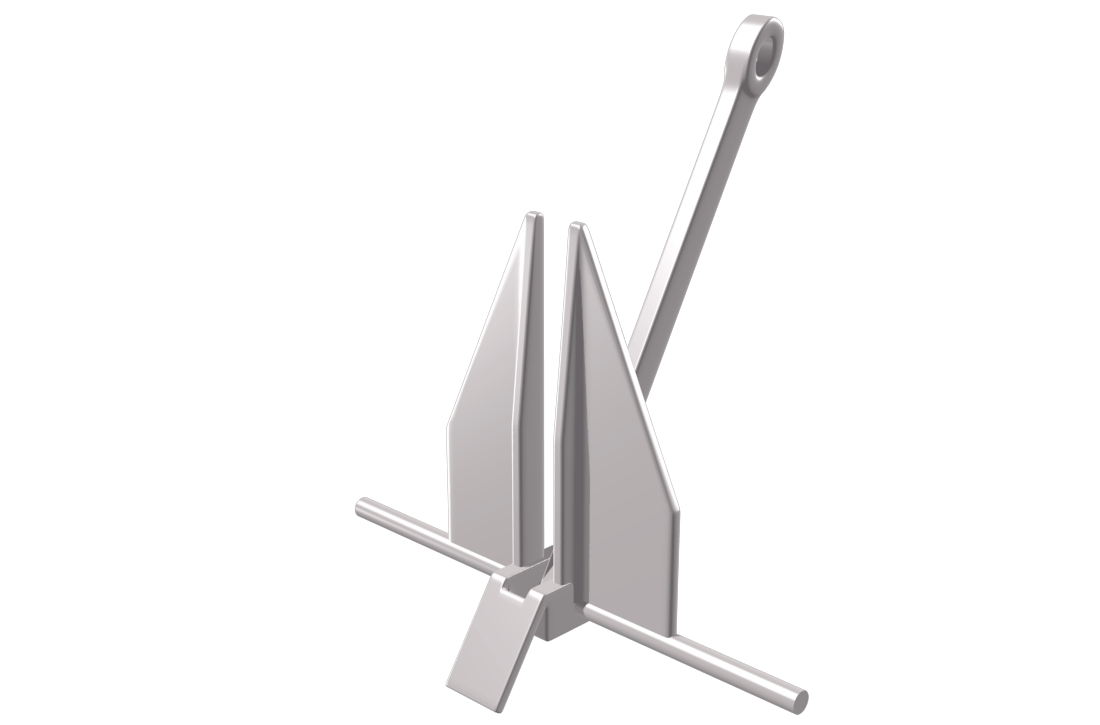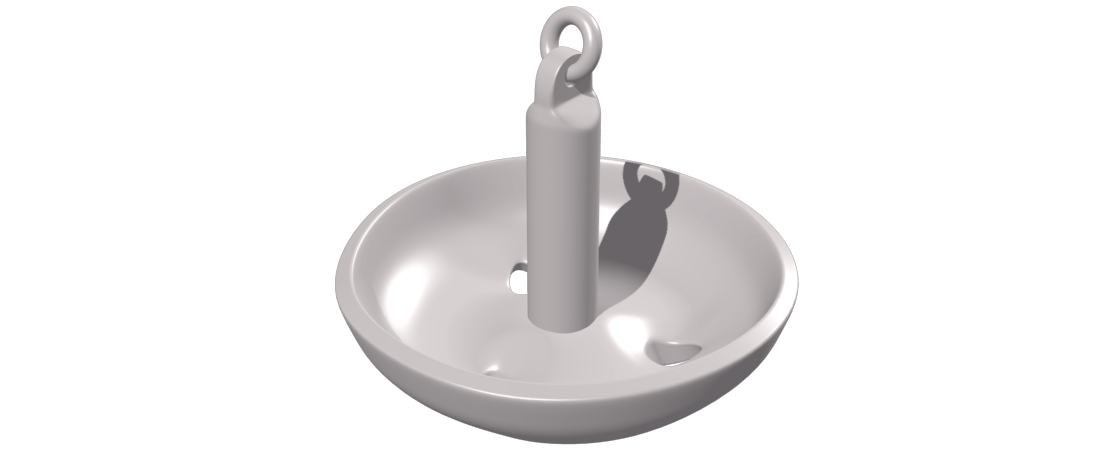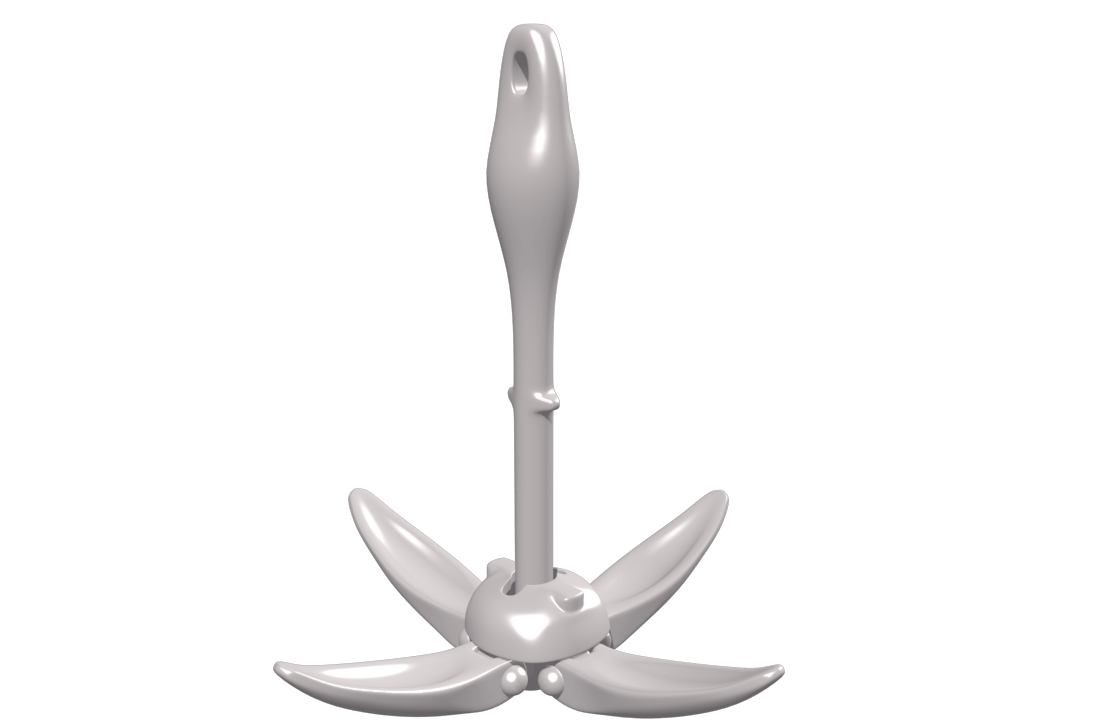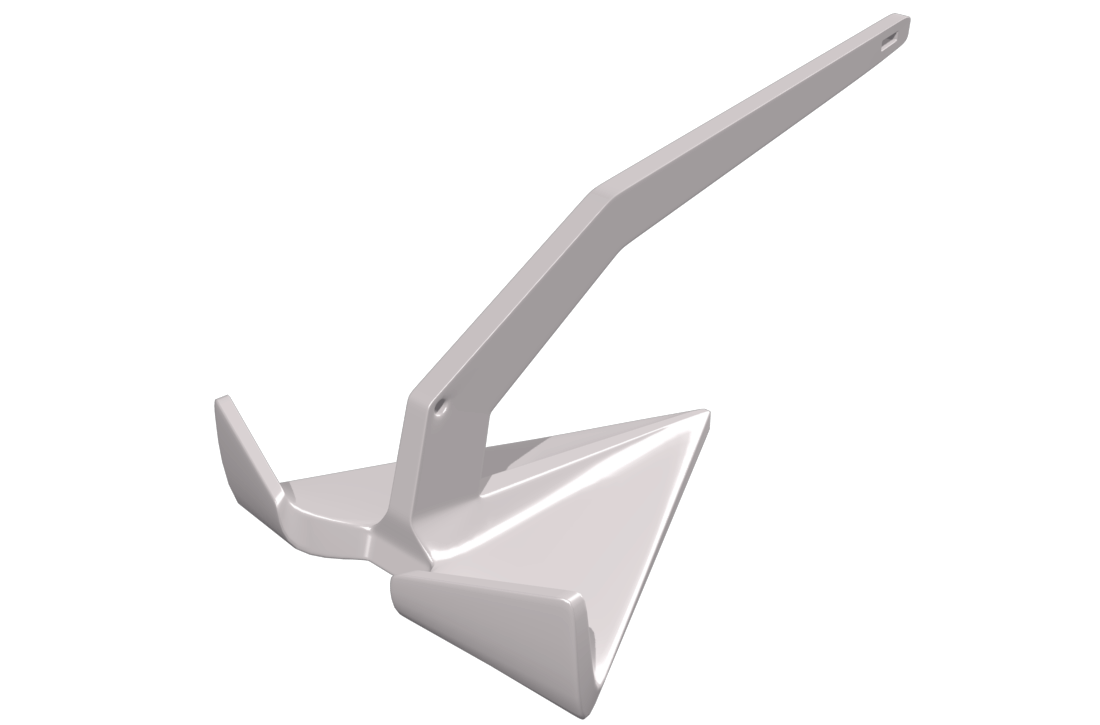Anchor Types Uses - Anchor line length - Proper procedure
Having the right anchor and cable for your boat is important. If you don’t, rough winds and water can cause it to drag, leaving your boat to drift. This is especially dangerous if you are asleep or swimming nearby. Make sure that your boat is well anchored and that the swivel is properly locked, and keep watch to detect signs of dragging. The first step in anchoring is to select the proper anchor. In spite of claims to the contrary, there is no single anchor design that is best in all conditions.

When selecting an anchor, its holding power and the type of seabed in which it will be used must be considered. As well, the anchor must be of proper size depending on the pleasure craft. It is best to have a heavier anchor than needed, because a lighter anchor will not keep the pleasure craft in place during bad weather conditions.
Danforth or fluke anchor
The Danforth or fluke anchor uses a stock at the crown to which two large flat triangular flukes are attached. The stock is hinged so the flukes can orient toward the bottom (on some designs they may be adjusted for an optimal angle, depending on the type of bed). Tripping palms at the crown act to tip the flukes into the seabed. The fluke anchor has difficulty penetrating kelp and weed-covered bottoms, as well as rocky and particularly hard sand or clay bottoms.

Mushroom anchor
The mushroom anchor is suitable where the seabed is composed of silt or fine sand. It is shaped like an inverted mushroom, the head becoming buried in the silt.
Mushroom anchors work great at holding boats in place on muddy bottoms but not all that well on rocky or sandy bottoms.

Grapnel anchor
A grapnel anchor is a traditional design. The grapnel is simply a shank with four or more tines. It has a benefit in that no matter how it reaches the bottom, one or more tines will be positioned to set. In coral it can often set quickly by hooking into the structure, but may be more difficult to retrieve.

Anchor line length requirements for overnight stay
Regardless of the type of anchor, it must fitted with no less than 15 m of cable, rope or chain or any combination of them, carefully secured to the bow of the boat. Transport Canada require a minimum length 5 to 10 times the depth of the water when dropping anchor line on a pleasure craft. Neither rope nor chain is fundamentally superior. They each have their advantages and disadvantages. However, for small boats, it is recommended to attach an elastic element such as a bending or a shock absorber to the anchor line, in order to absorb sudden shocks that can occur.
What is the proper technique for anchoring a boat?
-
Select an area that offers maximum shelter from wind, current, boat traffic etc. Never anchor in a busy channel or traffic separation zone.
-
A proper method for lowering an anchor is from the bow. Anchoring from the stern could cause the boat to swamp or capsize.
-
Pick a spot with swinging room in all directions. Should the wind change, your boat will swing bow to the wind or current, whichever is stronger.
-
Determine depth and bottom conditions and calculate the amount of rode you will put out.
-
If other boats are anchored in the area you select, ask the boat adjacent to the spot you select what scope they have out so that you can anchor in such a manner that you will not bump into the neighboring vessel.
-
Anchor with the same method used by nearby boats. If they are anchored bow and stern, you should too. If they are anchored with a single anchor from the bow, do not anchor bow and stern. Never anchor from the stern alone, this could cause the boat to swamp or capsize.
-
Rig the anchor and rode. Check shackles to make sure they are secured with wire tied to prevent the screw shaft from opening.
-
Lay out the amount of rode you will need on deck in such a manner that it will follow the anchor into the water smoothly without tangling.
-
Cleat off the anchor line at the point you want it to stop. (Don’t forget or you’ll be diving for your anchor.)
-
Stop your boat and lower your anchor until it lies on the bottom. This should be done up-wind or up-current from the spot you have selected. Slowly start to motor back, letting out the anchor rode. Backing down slowly will assure that the chain will not foul the anchor and prevent it from digging into the bottom.
-
When all the anchor line has been let out, back down on the anchor with engine in idle reverse to help set the anchor. (Be careful not to get the anchor line caught in your prop.)
-
While reversing on a set anchor, keep a hand on the anchor line. A dragging anchor will telegraph itself as it bumps along the bottom. An anchor that is set will not shake the line.
-
When the anchor is firmly set, look around for reference points in relation to the boat. You can sight over your compass to get the bearing of two different fixed points (house, rock, tower, etc. ) Over the next hour or so, make sure those reference points are in the same place. If not you’re probably dragging anchor.
-
Begin anchor watch. Everyone should check occasionally to make sure you’re not drifting.
-
Retrieve the anchor by pulling or powering forward slowly until the anchor rode hangs vertically at the bow.
-
Cleat the line as the boat moves slowly past the vertical. This will use the weight of the boat to free the anchor and protect you from being dragged over the bow.
-
Once free, raise the anchor to the waterline.
-
Clean if necessary and let the rode dry before stowing away.
